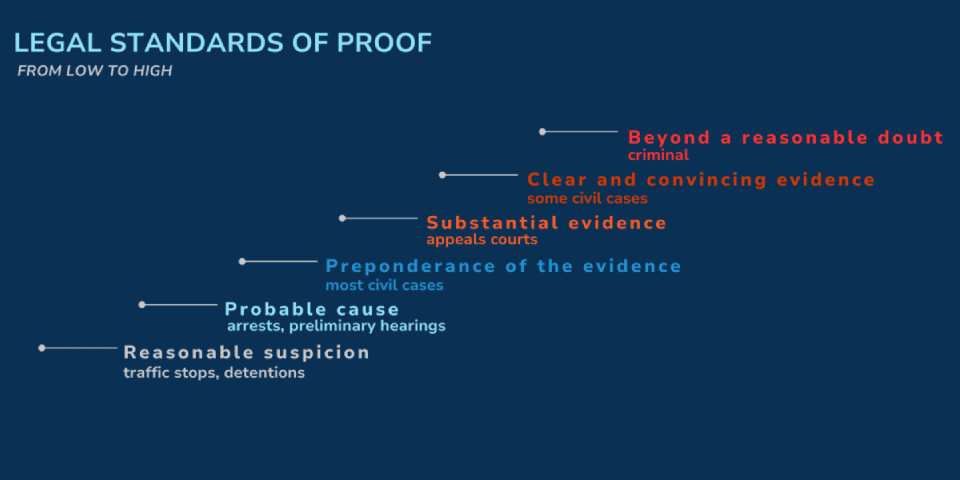Updated February 22, 2025
What is the Burden of Proof in Employment Law?
The “burden of proof” in employment law refers to the obligation of a party to prove their claims or defenses in a legal dispute. This concept is extensively used in various legal contexts, but in employment law, it often deals with issues ranging from wrongful termination to discrimination. essentially, the burden of proof is about determining which party has the duty to present adequate evidence that supports their case. In most employment law cases, it is the plaintiff—the employee—who carries this burden initially.
In the context of employment disputes,the burden of proof is typically expressed through two main standards: “preponderance of evidence” and “clear and convincing evidence.” The former implies that the claim must be more likely true than not, while the latter suggests a higher level of certainty. Understanding these standards is crucial for both employees and employers, as they shape the way evidence is examined and evaluated in court.
Moreover, the burden can shift throughout the legal proceedings. After the plaintiff presents initial evidence to support their claims, the burden may then shift to the employer to provide a legitimate justification for their actions. This intricate dance of the burden of proof underscores the importance of preparation and strategy in employment law cases.
In employment law, the burden of proof is who must prove a claim, and it depends on the type of claim. In California, the plaintiff usually has the burden of proof in employment disputes.
Burden of proof in employment claims
Discrimination:
Employees must prove that their employer’s actions violated the law. For example, employees must show evidence of discriminatory treatment based on race, disability, or gender.
Misconduct:
The employer must prove that the claimant was discharged for misconduct by a “weight of evidence”.
Retaliation:
The employer must prove that their decision was not motivated by retaliatory intent.
Burden-shifting:
In some cases, the burden of proof shifts between the employer and the employee. For example, in cases of alleged discrimination under California’s Fair Employment and Housing Act (FEHA), the employee establishes a prima facie case of discrimination.
The Balancing Act: shifting Burdens in Employment Disputes
Shifting burdens create a complex legal landscape that both employees and employers must navigate. Initially, the employee must establish a prima facie case—an assertion that, unless contradicted, is assumed to be true. This often includes showing that they belong to a protected class, that they experienced an adverse employment action, and that there is a causal connection between the two. If the employee meets this burden, the responsibility then shifts to the employer.
Once the burden shifts to the employer, they must produce evidence demonstrating a legitimate, non-discriminatory reason for their employment decisions. For instance, if an employee claims wrongful termination based on age, the employer could respond with documented performance reviews or evidence of company layoffs affecting various ages equally. This back-and-forth in proving the claims is what makes these cases especially intricate.
This balancing act of burdens emphasizes the necessity for thorough documentation and strategic planning. Both parties must be vigilant in gathering evidence that supports their respective claims and defenses, as the weight of proof can substantially influence the outcome of the case.
Types of Evidence: Building Your Case Around Employment Claims
In employment law cases, evidence can take various forms, each serving a distinct purpose in supporting the party’s claims. **Documentary evidence** includes emails, performance evaluations, policies, and employment contracts that can substantiate an employee’s allegations of unfair treatment. Such documentation plays a pivotal role in establishing a narrative that aligns with the claim.
The second type is **witness testimony**, whether from co-workers, supervisors, or industry experts. These testimonies can provide direct insight into the workplace environment and the dynamics affecting the employment relationship. Witnesses can either strengthen a case or raise doubt about a party’s claims, making their relevance critical.
**statistical evidence** can also be vital in employment law cases, particularly for discrimination claims. For example, statistical comparisons between diffrent demographics in hiring or promotion rates provide a broader context that can either highlight or dispel claims of bias. Thus, building a case requires synthesizing various types of evidence into a cohesive argument.
Navigating Challenges: Defending Against the Burden of Proof
Defending against the burden of proof in employment law cases can be challenging for employers. They must not only present counter-evidence but also establish a basis for their decisions. This frequently enough involves reviewing internal procedures, ensuring compliance with established protocols, and scrutinizing any policies that may appear biased.
Another notable challenge is avoiding the pitfalls of **adverse inference**, where a court may assume that missing evidence would have been unfavorable to the employer’s case. This may occur if documents are lost or destroyed or if witnesses refuse to cooperate. Therefore, maintaining meticulous records and documenting decision-making processes is paramount.
Employers should also be prepared for the potential of **reputational damage**. Even if they succeed in legal matters, the publicity surrounding a lawsuit can affect employee morale and public perception. A strategic approach to managing evidence and case narratives can mitigate both legal and reputational risks.
Real-World Applications: Case Studies in employment Law Verdicts
Understanding the burden of proof is greatly enhanced through real-world applications. One notable case is **McDonnell Douglas Corp. v. Green**, which established a framework for analyzing discrimination claims. In this case, the Supreme Court ruled that the plaintiff had to establish a prima facie case of discrimination, and then the employer needed to articulate a legitimate reason for the adverse action taken against the employee.
Another significant case is **Texas Dep’t of Community Affairs v. Burdine**, which introduced the “shifting burden” concept explicitly. in it,the Court determined that once an employee established a prima facie case of discrimination, the burden shifted to the employer to show that their decision was made for legitimate,nondiscriminatory reasons.
These examples illustrate how the burden of proof impacts judicial outcomes, emphasizing the importance of evidence collection and presentation strategies in employment law cases. It also highlights that successful navigation of employment disputes often hinges on the ability to fulfill or rebut the burden of proof effectively.
Conclusion
The burden of proof in employment law is a critical concept that affects both the employee and employer in a legal dispute. By understanding the requirements for presenting evidence and the implications of shifting burdens, both parties can develop more effective strategies. Ultimately, navigating this complex legal landscape requires a meticulous approach to documentation and a strong grasp of evidentiary principles, as outcomes can hinge on who successfully meets their burden.






